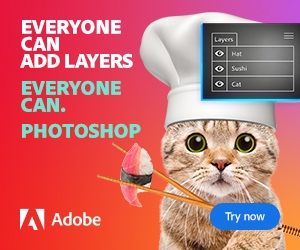Video editing has become an essential skill for anyone looking to create high-quality content. Whether you’re an aspiring YouTuber, a social media influencer, or someone who simply wants to improve their video projects, knowing how to edit video footage professionally can elevate your work significantly.
If you’re new to video editing, the process might seem overwhelming. However, with the right guidance, tools, and techniques, you can quickly master the fundamentals and create videos that stand out. In this guide, we’ll walk you through the basics of video editing, recommend useful software, and give you practical tips that will help you improve your editing skills.
Why Video Editing is an Important Skill for Beginners
In today’s digital age, video content is a primary way to communicate ideas, promote businesses, and share stories. Whether you’re looking to entertain, educate, or inform, video is the most powerful medium.
However, raw footage isn’t enough. Editing your videos allows you to:
Create a compelling narrative: Raw footage may not tell a clear or engaging story. Editing enables you to craft a narrative that flows smoothly from start to finish.
Improve quality: You can enhance visuals, sound, and overall video production quality to make your content more professional.
Adjust pacing: Video editing helps set the rhythm of your content, ensuring it captures and holds the audience’s attention.
Add effects and music: Editing gives you the freedom to add effects, music, text, and animations that enhance your video and keep it visually engaging.
If you’re just getting started, mastering video editing is one of the best investments you can make in your creative journey.
Step-by-Step Guide to Video Editing for Beginners
Let’s break down the video editing process into manageable steps:
1. Choosing the Right Video Editing Software
The first step to becoming a video editor is choosing the software that best suits your needs. Luckily, there are many options available, ranging from free and simple tools to advanced professional software. Here are some great choices for beginners:
Windows Movie Maker (Free): A basic, easy-to-use tool that allows you to trim videos, add music, and incorporate transitions. Ideal for beginners who are just getting started.
iMovie (Free for macOS and iOS): A user-friendly software that offers essential video editing tools like trimming, cutting, and adding effects. iMovie is a great choice for Apple users.
Shotcut (Free): This open-source software is compatible with Windows, macOS, and Linux. It offers a wide variety of features and is perfect for beginners who want to experiment with more advanced options as they grow.
DaVinci Resolve (Free and Paid): DaVinci Resolve is a professional-grade video editing software known for its powerful color grading and audio editing features. While it has a steep learning curve, its free version is perfect for beginners who are ready to explore more advanced features.
Adobe Premiere Pro (Paid): Adobe Premiere Pro is one of the most popular tools for professional video editors. It offers advanced features for multi-camera editing, color grading, and sound mixing. It may be more complex, but it’s worth learning if you’re serious about video production.
Choosing the right tool depends on your goals and experience level. Start with something simple and free, and as your skills develop, you can switch to more advanced software.
2. Importing and Organizing Your Footage
Once you have your video editing software, the next step is importing your footage into the editor. Most software allows you to drag and drop your files, but some have an “Import” or “Add Media” option.
It’s also important to organize your footage effectively. Label each video clip according to its content (e.g., “Intro,” “Scene 1,” “B-Roll,” etc.) and separate the audio and video files to keep everything easily accessible.
Having a well-organized project will make your editing process smoother and faster.
3. Cutting and Trimming Your Footage
The next step is to cut and trim your video clips. This is where you’ll get rid of unnecessary parts, such as long pauses, mistakes, or anything that doesn’t contribute to the narrative. Cutting your clips to the essential footage is crucial in keeping your video concise and engaging.
Here’s how to cut and trim:
Trim the beginning and end of each clip to remove unwanted intro or outro footage.
Split clips into smaller parts if needed, removing sections in between.
Use the “Razor” or “Cut” tool to divide the footage into segments that you can move around.
By trimming excess content, you help your video move at a steady pace, ensuring that it doesn’t drag on and lose the viewer’s attention.
4. Arranging Your Clips
Once you have your footage cut, the next step is arranging it on the timeline. The timeline is where you will place all your video clips, audio, and effects in the correct order.
A good editing practice is to start by placing your main clips in order—this will be the backbone of your video. Then, add secondary clips, such as B-roll or overlays, to support your primary footage.
If you’re telling a story, think about the pacing of your video. Make sure your video flows naturally from one scene to the next and that there’s a logical sequence of events.
5. Adding Transitions and Effects
Transitions and effects can add visual interest and smooth out the flow of your video. Some common transitions include:
Fade: A gradual transition between clips that works well for introductions and conclusions.
Dissolve: A slow fade from one clip to another, creating a soft transition.
Slide or Wipe: A transition where one clip slides off-screen to reveal the next.
Effects such as color grading, slow motion, or speed ramps can enhance the mood and pacing of your video. However, be careful not to overdo it—too many effects can make your video look chaotic and unprofessional.
6. Adding Music and Audio
Audio is just as important as video in keeping your viewers engaged. You can add background music, sound effects, or voiceovers to enhance your video.
When adding music, choose tracks that complement the mood of your content. If you’re creating an energetic vlog, choose upbeat, fast-paced music. If it’s a tutorial, opt for calm, soothing background music.
Ensure that your voice-over or dialogue is clear, and adjust audio levels so that the background music doesn’t overpower the spoken content.
7. Incorporating Text and Titles
Adding text overlays and titles can help clarify points or give more information to your audience. Some useful text additions include:
Intro Titles: These introduce the topic or theme of your video.
Lower Thirds: Small text placed at the bottom of the screen, often used for names or key information.
Call to Action: Encourage viewers to like, subscribe, or follow with text on the screen.
Be sure to choose fonts and colors that match the style and tone of your video, and keep text on-screen long enough for viewers to read comfortably.
8. Exporting Your Video
After you’ve finished editing, the last step is exporting your video. Be sure to choose the appropriate resolution and format for the platform where you plan to share your video (e.g., YouTube, Instagram, etc.).
Resolution: For YouTube, 1080p (Full HD) is standard. If you’re uploading to Instagram or TikTok, square or vertical resolutions might be better.
File Format: Most platforms support MP4 files. This format is widely accepted and provides a good balance between video quality and file size.
Conclusion
Video editing is an essential skill for anyone who wants to create professional-quality content. While the process may seem intimidating at first, with the right tools and techniques, anyone can learn how to edit videos effectively. By following the steps outlined in this guide, you can start editing videos like a pro and create content that captivates your audience.
Remember, practice makes perfect. As you gain more experience, you’ll be able to experiment with advanced techniques and refine your editing style. Keep learning, experimenting, and honing your skills—your journey to becoming a skilled video editor starts now!

